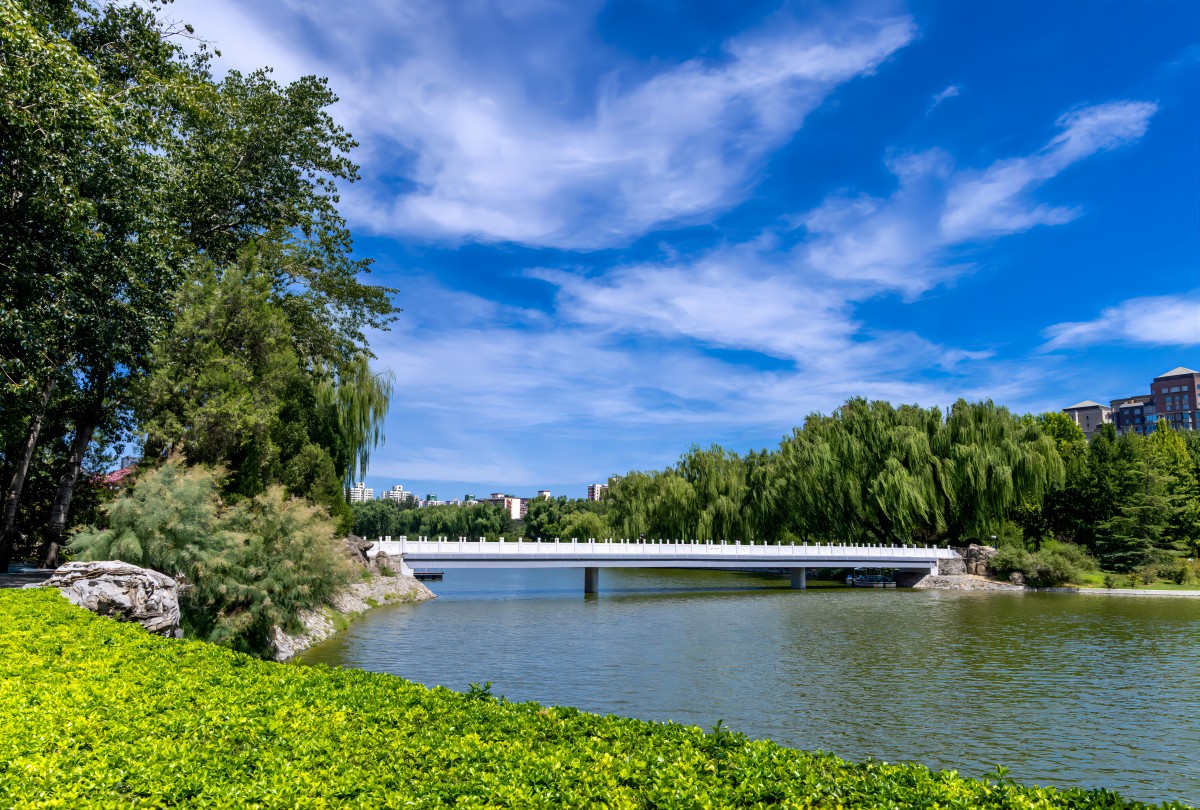The 24 bridges on the Liangma River

Youyi (Friendship) Bridge
It is adjacent to Yansha Friendship Mall and the Destiny Community Plaza. Together, they symbolize the lasting friendship between Beijing and the rest of the world.
Maijia Bridge
Maizidian Sub-district, where the bridge is located, is a window to the world for Beijing’s Chaoyang District.
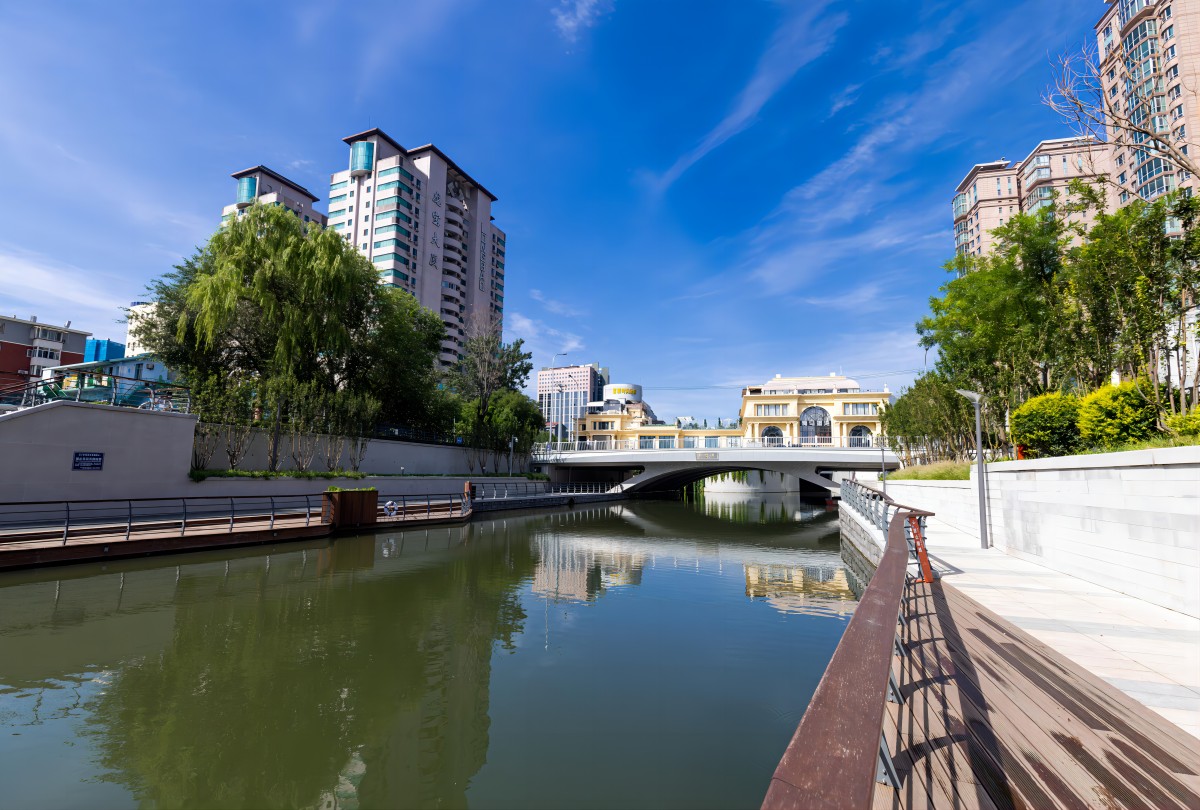
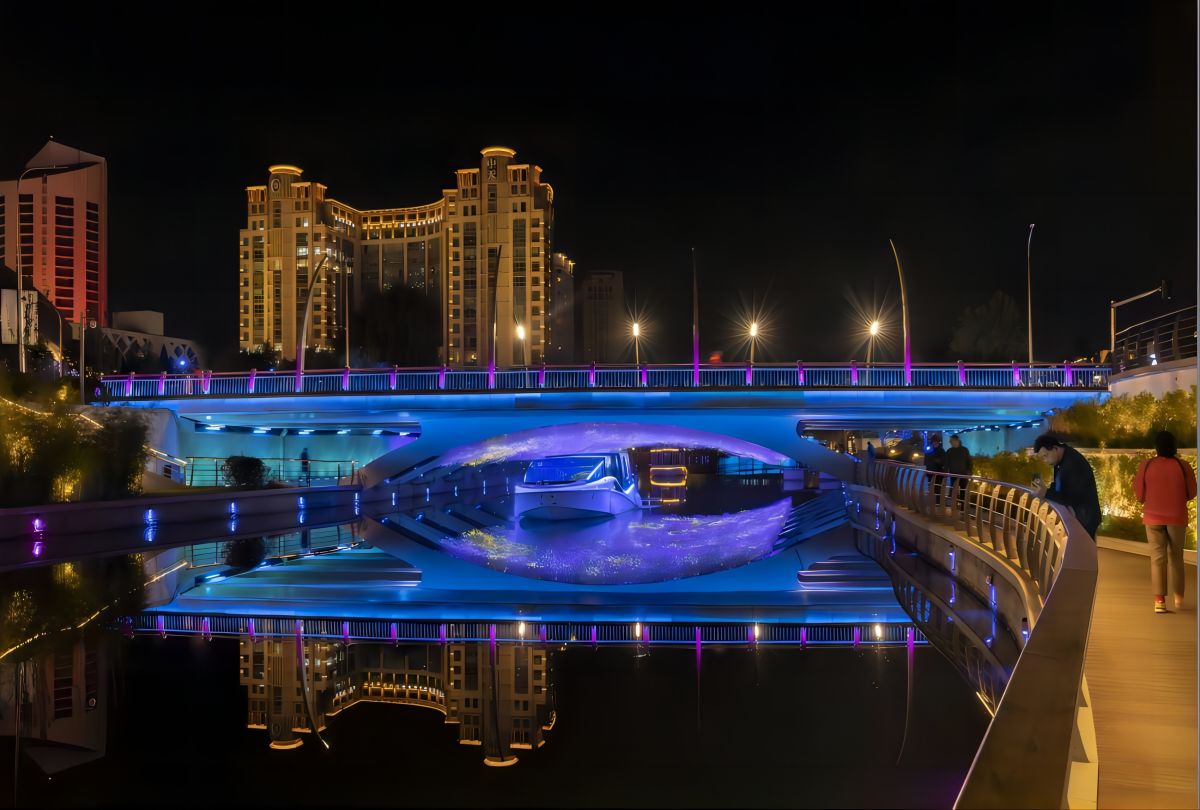
Haoyun (Good Fortune) Bridge
The bridge is said to bring good fortune to people when they cross and it’s close to Haoyun Street International Food Late Night Canteen and is full of life at night.
Lanmeng Bridge
The bridge, namely, the blue dream bridge, is a romantic scene of the SOLANA. It has a dreamlike touch to it after upgrading. Young people often come here to enjoy the river view and take pictures.


Liuli Bridge
The bridge is close to the Liangma Antique Market. Liuli, its name, both represents Beijing’s cultural heritage and symbolizes the rising sun of Chaoyang District reflected in the river.
Yinma Bridge
This was the location of the Imperial Stable during the Yongle period of the Ming Dynasty (1368-1644). The bridge gets its name because horses were cleaned and dried here at that time.
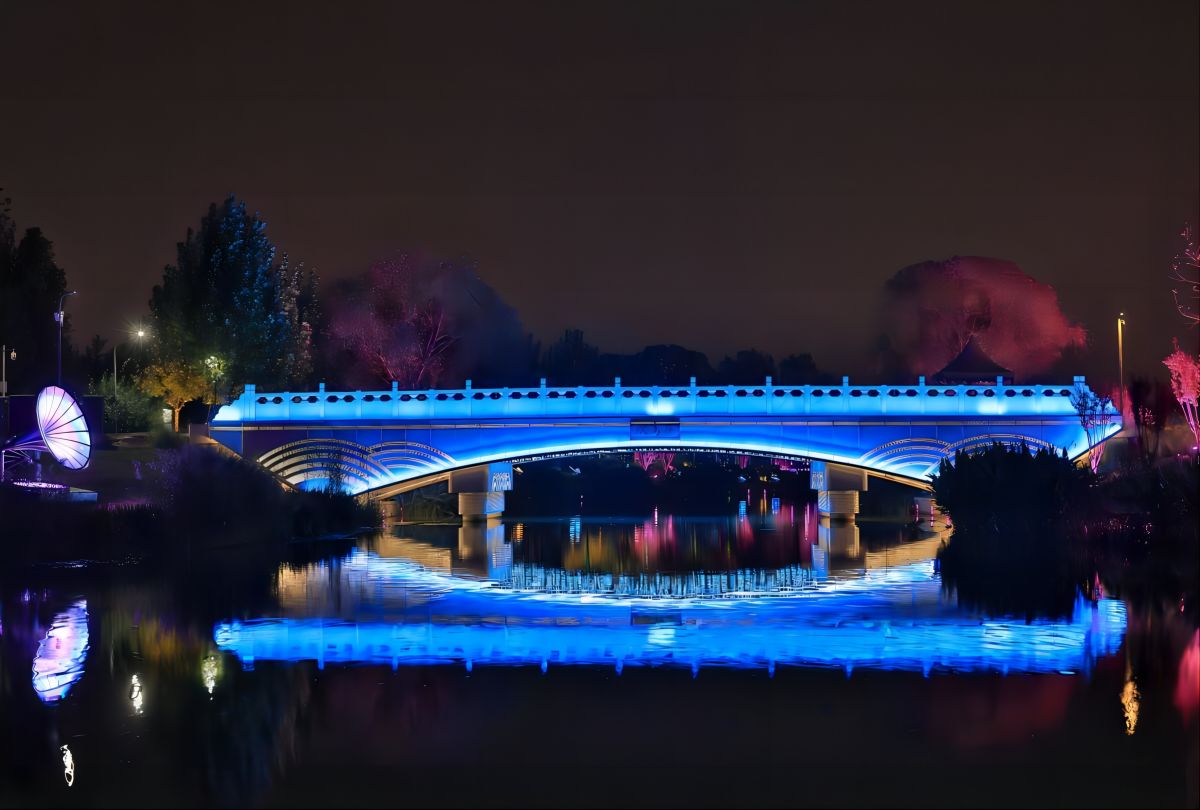
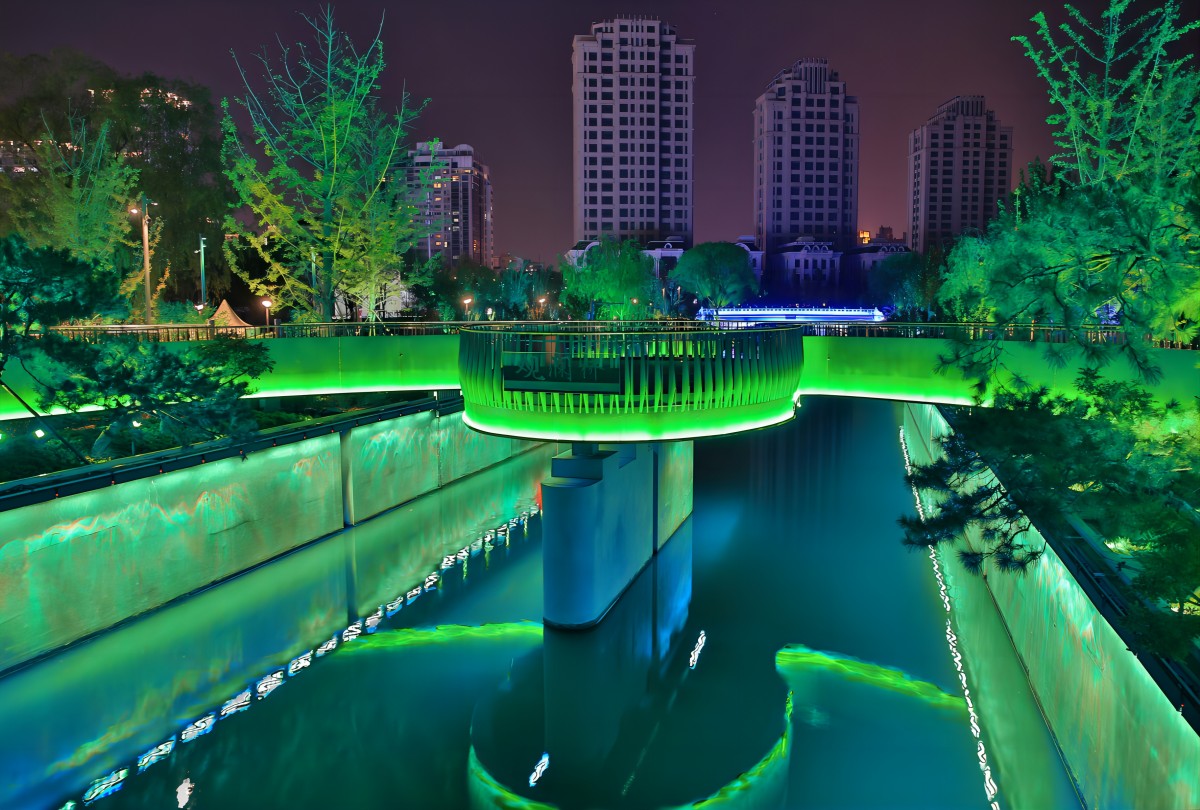
Guanlan Bridge
The bridge, meaning scenery watching bridge, gets its name from the Chinese classic Mencius. It is graceful in design and locals often come here to watch the beautiful river scene. The meaning behind the name is that people should eagerly explore the unknown.
Shuidui Bridge
The bridge is located in Beijing Chaoyang Park, formerly Shuiduizi Park, amid a large body of water and a nice environment. It stands as a witness to the past changes in the area.
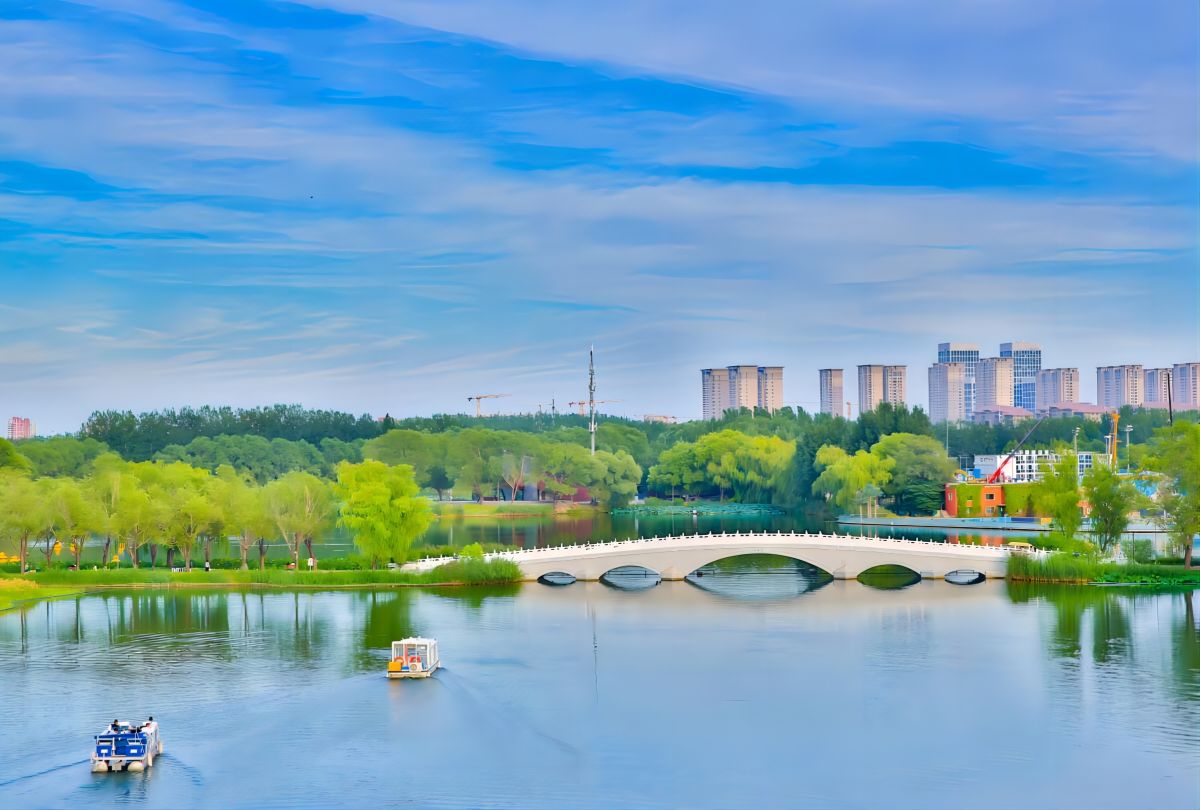
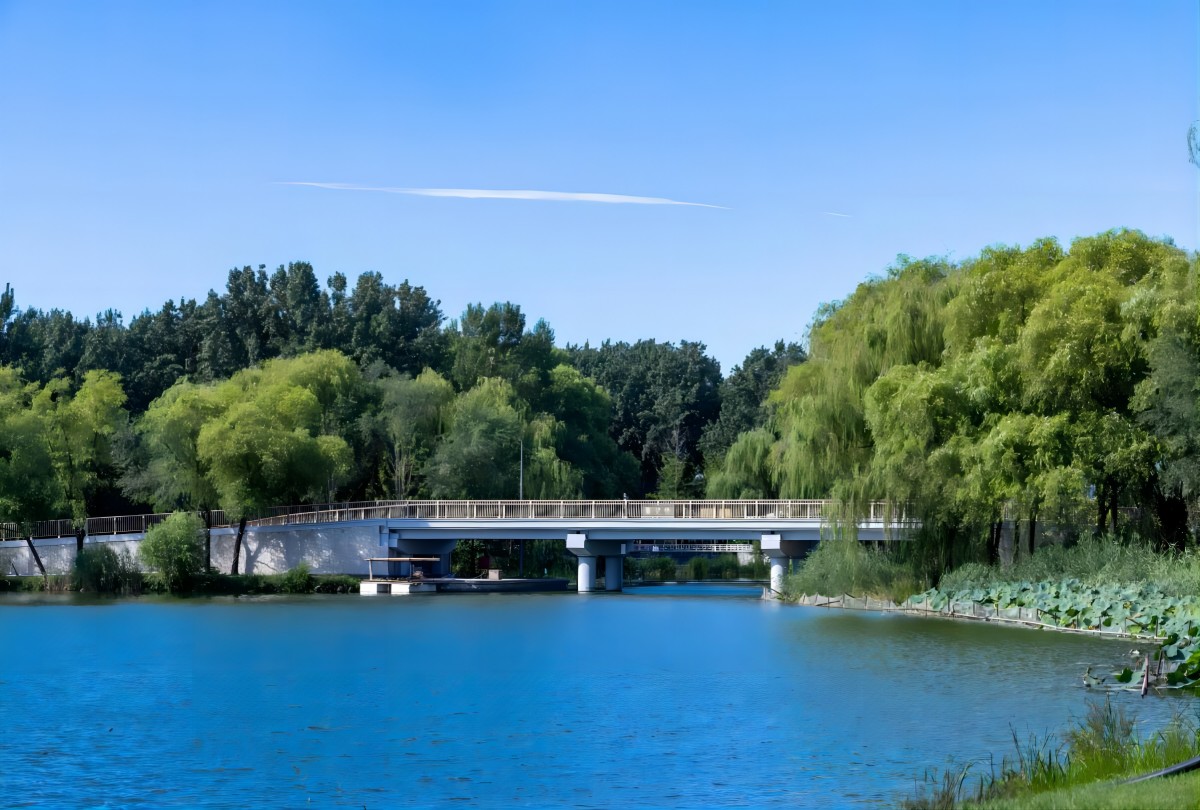
Bisha Bridge
The bridge was built to commemorate the 2008 Olympic beach volleyball match held here. Bisha, its name, is from a classic Chinese poem, meaning that the water is so clear that the sand grains at its bottom are visible like pearls.
Heguang Bridge
The name of the bridge, meaning shining like light, is from the ancient Chinese classic The Tao-te Ching. It means that active pursuit of development and creativity and all are equal when it comes to the application of basic principles.


Wenqu Bridge
The bridge gets its name from a line of Chinese scholar Zhu Xi (1130-1200)’s poem: “How can it be so clear and cool? For water fresh comes from its source.” It also implies that constant learning will create vigor.
Chungu Bridge
The bridge stands besides a waterfall and rocks and connects Sakura Valley, hence its name means the spring valley.
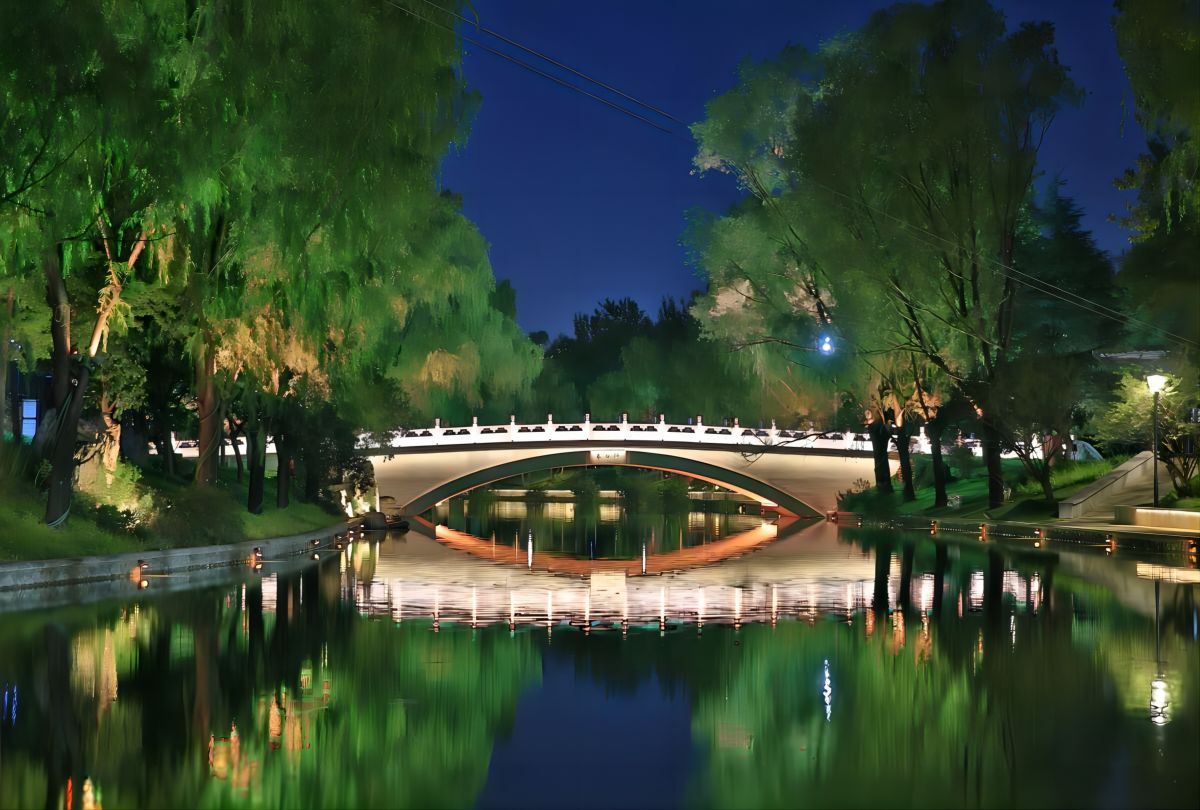
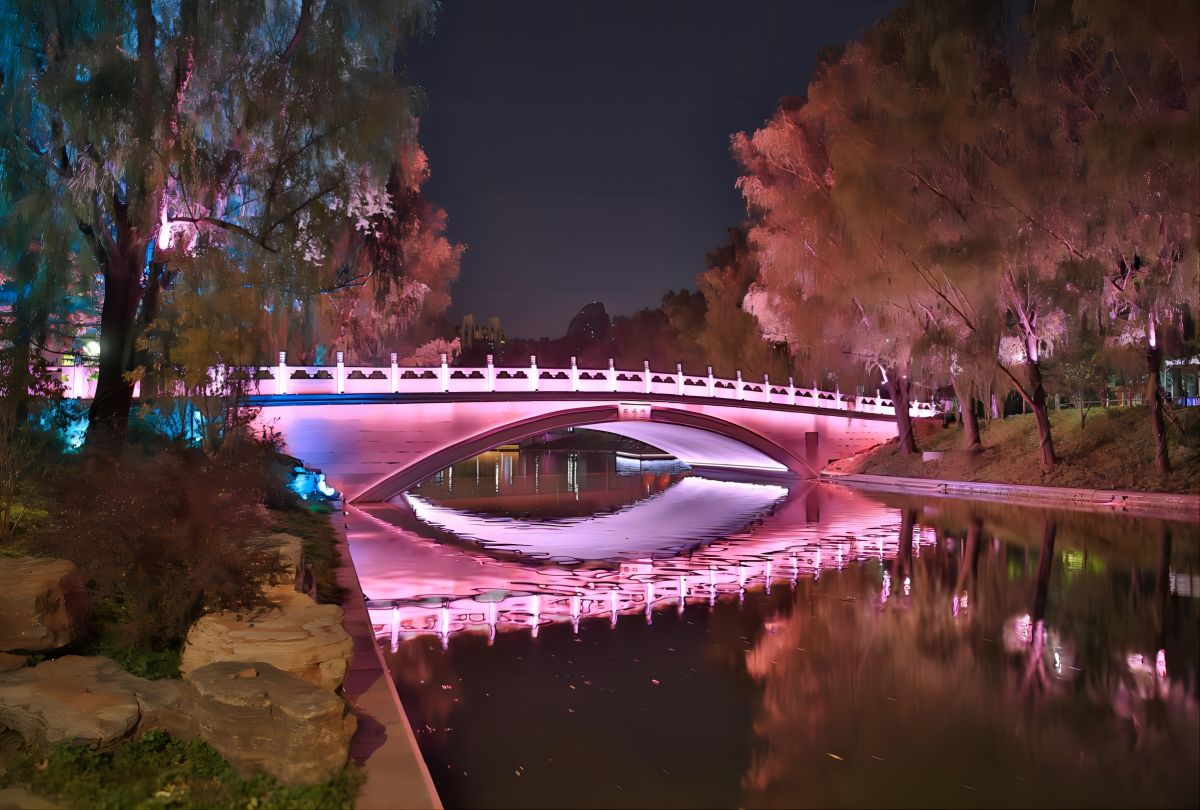
Yanming Bridge
The first part of the name of the bridge, Yan, refers to an ancient kingdom of Yan in this area, bringing back memory of the beginning of the city.
Caihong (Rainbow) Bridge
The bridge has its name, the rainbow, from a poem by Li Bai, the famous Chinese poet (701-762). There is a rainbow fountain in the Century Fountain Square on the west side of the bridge, where visitors often take pictures.


Wuyang Bridge
It is near the front gate of Prince Shuncheng’s Mansion. The name Wuyang, according to I Ching: Book of Changes, means facing the sun.
Yin’an Bridge
The three bridges located in front of the main gate of Prince Jun’s Mansion are named after the main hall in the mansion - Yin’an Hall.
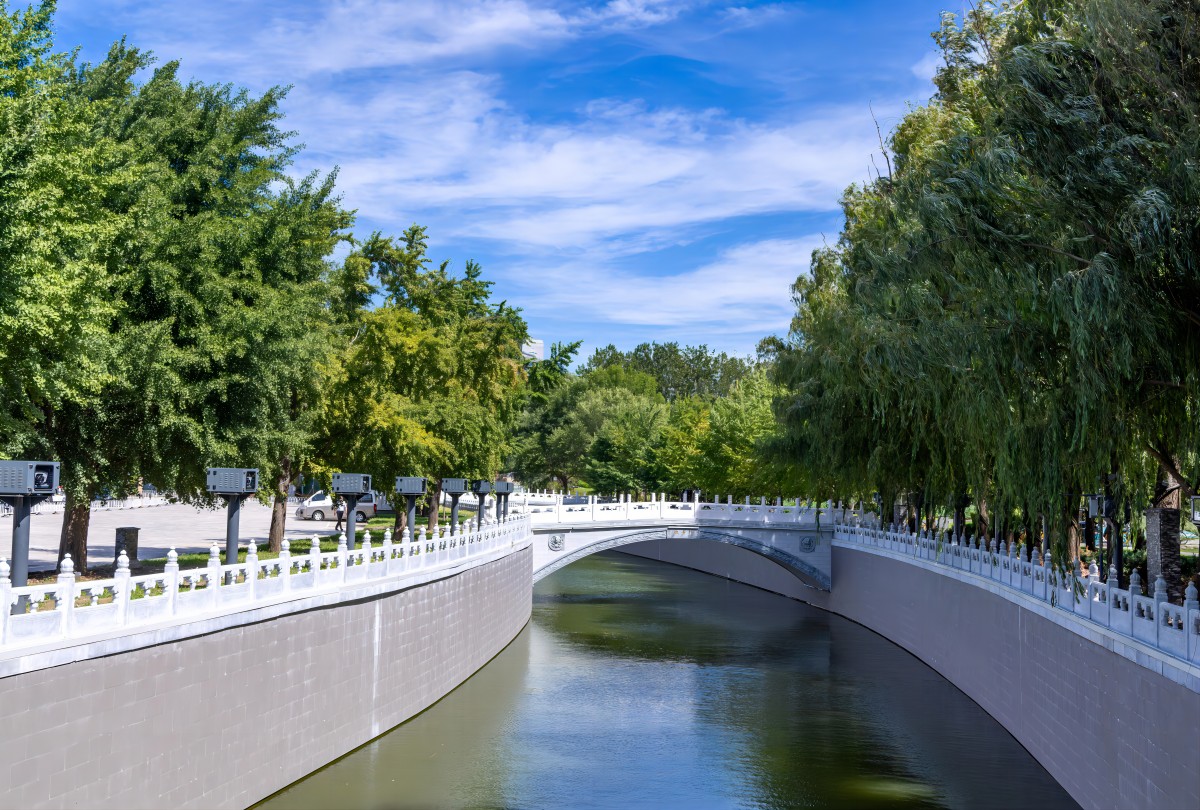

Yin’an East Bridge
Yin’an West Bridge
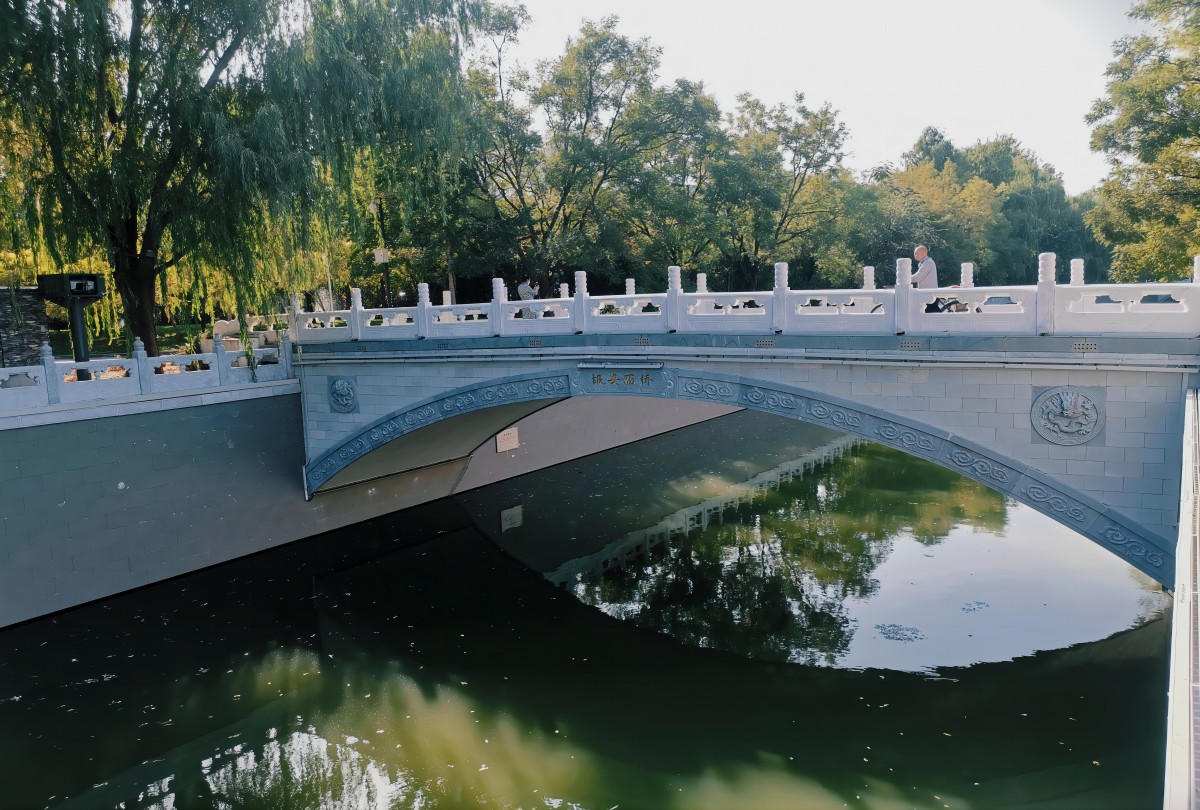
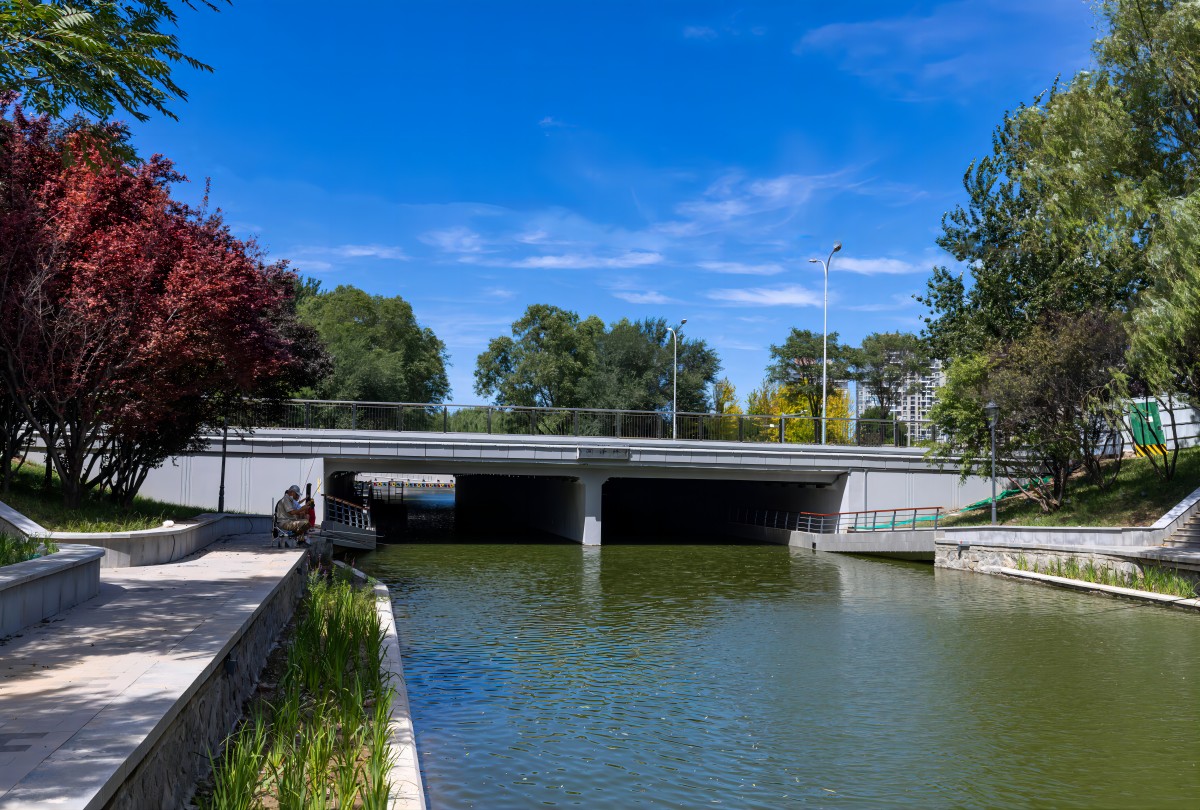
Runze Bridge
The bridge gets the name from a Chinese saying, “The marsh nourishes all the things and brings abundant food and resources to the people.” Crossing the river on the south road of Agricultural Exhibition Hall, it implies that water nourishes the land and brings prosperity.
Canglin Bridge
The bridge gets its name from a saying in The Grand Scribe’s Records, an ancient Chinese classic, “Only when the granary is full will people learn etiquette; only when people are well-fed and clothed will they know honor and shame.” In the nearby Liulitun village are the ruins of a terrace built during the eastern expedition by Emperor Taizong of the Tang Dynasty (618-907).
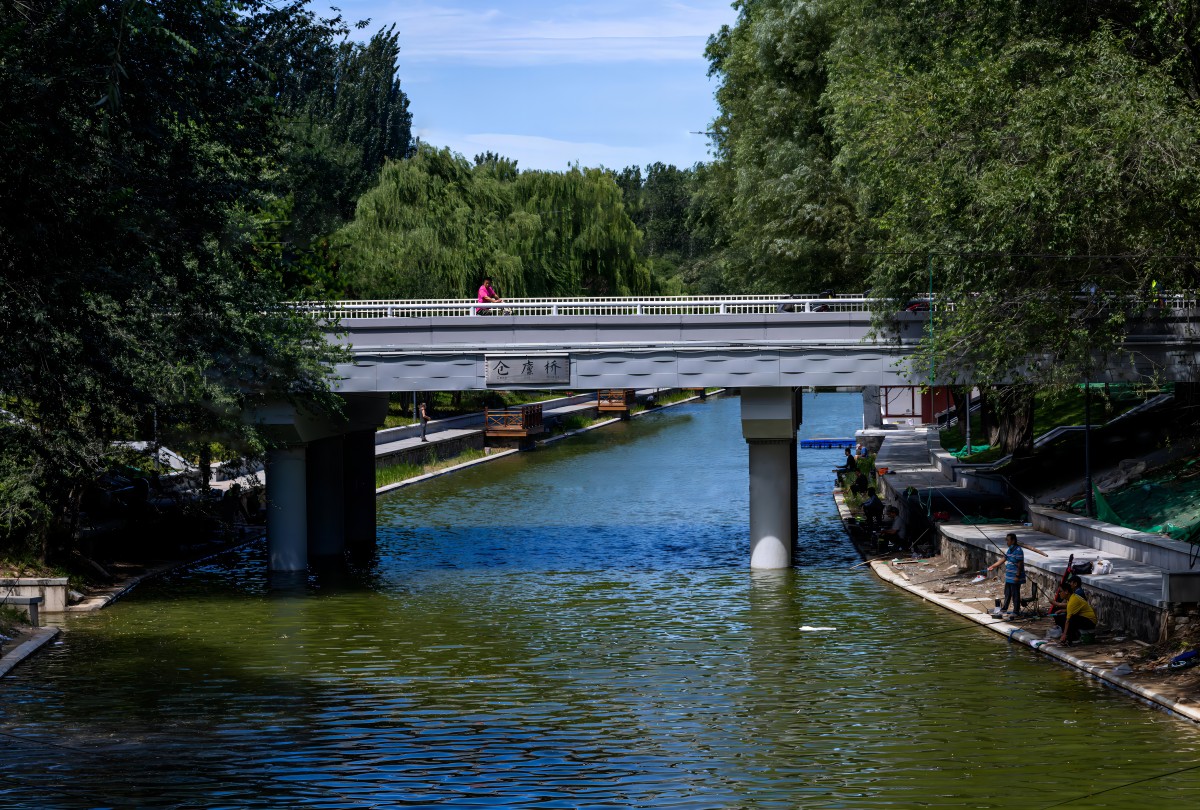

Huoshui Bridge
This is the end of the two lakes connecting canals. It gets its name from a line of Chinese scholar Zhu Xi (1130-1200)’s poem: “How can it be so clear and cool? For water fresh comes from its source.”It implies that those who are open-minded to different ideas and opinions can keep abreast of the times and generate unique thoughts.
Risheng Bridge
Its name comes from a line of The Book of Songs: “as if the waxing moon are becoming full, as if the sun are rising”. It wishes young people vitality and a bright future.
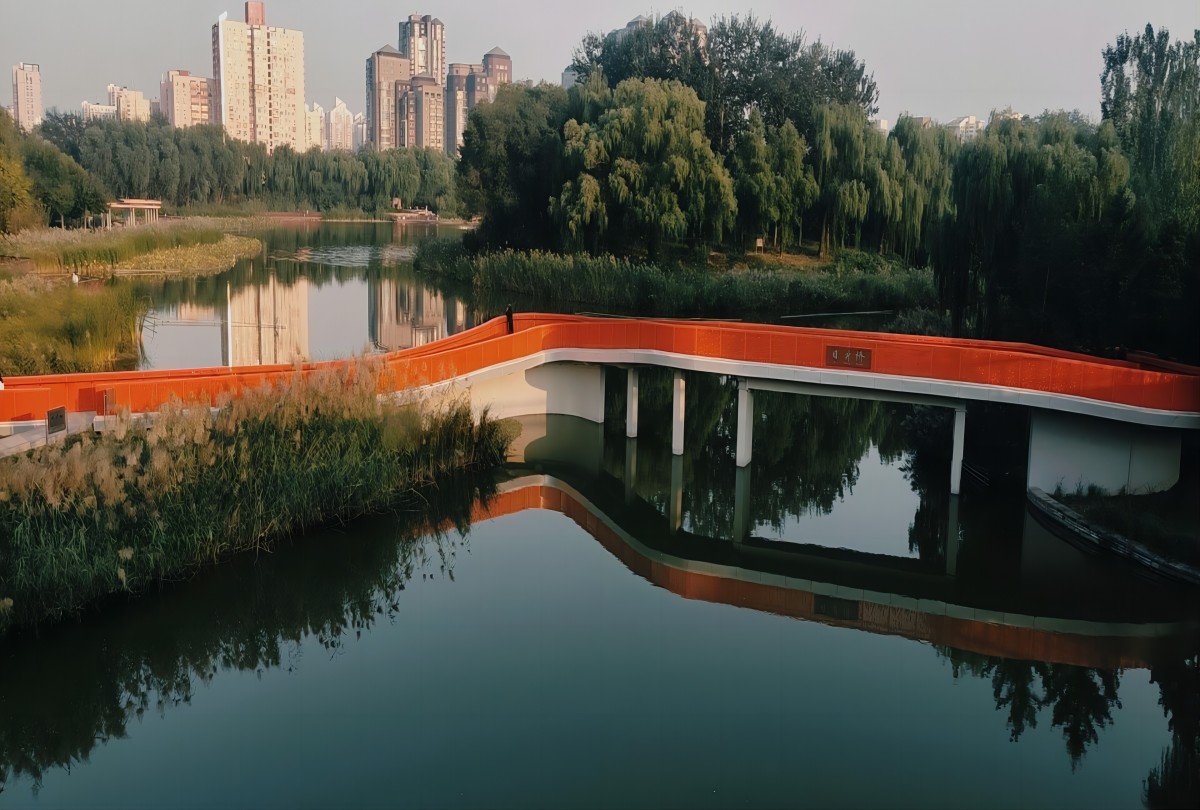

Lianxin Bridge
The Honglingjin Lake, where the bridge is located, is shaped like a heart, which means “stay true to your original aspiration and keep your mission firmly in mind.”
Zhijin Bridge
The bridge is located in Balitai area, where textile industry was the pillar industry in the old days. The meaning of its name is brocade, a symbol of people’s longing for a better life.
